Concrete compaction. mechanical and manual methods
The most responsible handling when laying a concrete mix is its thorough compaction. Physical and technical characteristics of the finished concrete product or construct depend on the quality of the sealing procedure along with other aspects. During the process, air bubbles are removed from the concrete, which increases the density and uniformity of the fresh mixture, as well as adhesion to the reinforcement cages and embedded parts.

Ways to compact concrete
Depending on the amount of concrete work and technical and operational requirements for the structure being constructed, various methods of compacting concrete are used.
Manual seal
Laying and compaction of the concrete mix by hand is practiced in private construction, when it is necessary to save money, or it is not possible to use special equipment.
Perform such manipulations with your own hands is not an easy task, so this is, of course, a small amount of concrete mix. Most often, in similar circumstances, the process of preparing the solution itself is also carried out independently. (See also the article Dust removal of concrete: how to do it.)
Such a seal can be performed with the help of available tools:
- Scrap.
- Shovels
- Hand tampers and bayonets, and other devices.

The following procedures are performed by any of the above tools:
- Immersion of improvised means in a container filled with solution every 5-10 cm of area, this allows you to remove excess air.
- Stirring fresh mass, for uniform distribution of the solution.
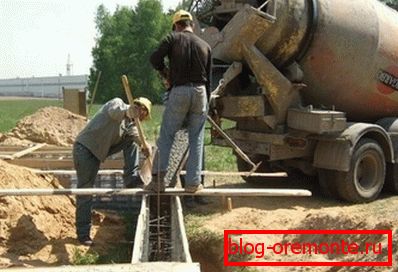
Mechanical seal
Mechanical compaction method is used when working with large volumes of concrete mix.
This process is carried out through various specialized devices:
- Surface vibrators. Such mechanisms compact concrete mixtures in structures with a large surface area or a small layer thickness:
- Slab grounds.
- Flooring
- Retaining walls.
- Dam.
- Roadbed.
The surface vibrator consists of a flat plate connected to a vibromechanism, similar to formwork vibrators. The vibrating plate is used after compaction with internal vibrators, successfully leveling large surfaces. (See also the article Concrete Sealer: Features.)
The effective depth of vibrating with surface vibrating devices is from 20 to 30 cm.
Note! Roads with asphalt concrete pavement of constant width and large extent are compacted with the help of the so-called vibrating rail.
- An internal vibrator for compacting concrete is considered to be the most efficient compared to other types of mechanisms, since the energy flowing from it is transmitted directly to the concrete mix. In addition, internal vibrators are easy to operate and can be used in hard-to-reach places.
Internal vibrators are installed, if possible, in a vertical position. Moving the vibrator to another place at a distance of 45 to 75 cm from the previous position, one should carefully and slowly remove its working part from concrete. The optimal immersion speed of the vibrator is 2-3 cm per second.
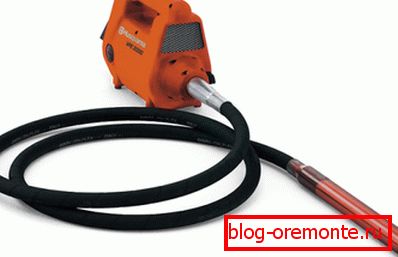
Attention! Vibrators should not be used to distribute the concrete mixture in shape. This will lead to the separation of concrete.
To obtain a smooth concrete surface after removing the formwork, experts recommend immersing the vibrator near the formwork at a distance of about 10 cm. The operating time of the vibrator in one position should be from 5 to 15 seconds. The completion of the process will also be prompted by the cement jelly that appears around the vibrator and the characteristic sound of the instrument.

It should be understood that the compaction is performed in layers. Each subsequent layer is vibrated to the full depth and preferably with a 3-5 cm dip into the previous layer in order to seal the joint between the layers well.
- Vibrators mounted on the formwork. The formwork vibrators are very rigidly fastened to the formwork or form and compact the concrete mixture enclosed in them, causing the form to vibrate, which is transmitted to the concrete. Formwork vibrators are simply indispensable for concreting structures with complex, frequent reinforcement or manufacturing products of small and non-standard forms.
Note! For the strength, rigidity and reliability of formwork and forms in the case of the use of formwork vibrators, increased demands are being made, since they will have to overcome vibration loads.
The use of formwork vibrators leads to the formation of air bubbles in the concrete body mainly in the upper layer. Therefore, to improve the quality of compaction, the top layer of the order of 50-60 cm should be modified manually or, if possible, with the help of an internal vibrator.
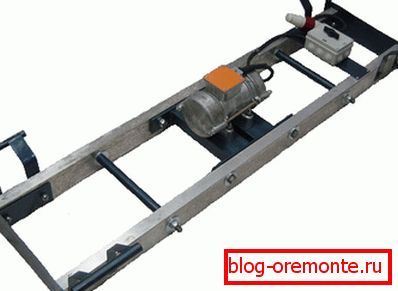
All types of vibrators are divided into pneumatic and electric. The advantage of pneumatic vibrators over electric ones is their ease of handling and safety. However, when used during the cold season, due to the rapid decrease in air pressure there is a risk of the pneumatic vibrator cylinders freezing.
It is possible to deal with this in several ways:
- Feeding dry air into the room.
- Spraying liquid oil or other substances that prevent freezing into the air duct.
- Supply air, passing it initially through a heated coil.
Compressors that supply very large air and their price exceeds the cost of electric generators, but in some circumstances they cannot do without.
Recommendations for the process of compacting concrete
To avoid disturbing the homogeneity of the concrete mix and the unevenness of its compaction, observe the following safety measures:
- When constructing formwork, make sure that the density of the connection of its parts. Do not allow the formation of cracks (through them can be squeezing concrete). Formwork should be smooth so as not to leave dents on the concrete body. On the concrete may appear shells, voids.
Note! All formwork components, including wedges and struts, must be securely fastened, without the possibility of displacement.
- Concrete vibrating in one position of the vibrator should not last too long.From this, the homogeneity of the mixture is also disturbed; caverns are formed.
- Instruction for compaction recommends and generally not to delay the whole process, as this may lead to the separation of the mixture. This is due to the fact that larger fractions are knocked down, and only cement mortar will accumulate on the surface.
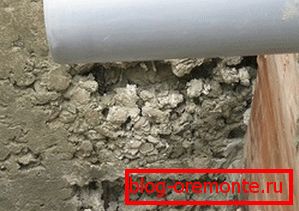
Compaction factor
Obviously, after compacting, the concrete mix will decrease in volume, all air will be removed from it, so order ready concrete or prepare it yourself, taking into account the coefficient of compacting the concrete mix. Ready mixes produced in special plants are characterized by a strict concrete compaction factor according to SNiP (k = 1.02), which means a decrease in the volume of the mixture in the structure by 2% of the filled one.
The compaction rate of asphalt concrete is somewhat higher and moreover depends on the granularity of the concrete mixture and even on the object being asphalted:
- Pavement walkway.
- The blind area of the building.
- Highway.
The averaged coefficient of compaction of the asphalt concrete mixture is taken into account in an amount of 5% (k = 1.05). Based on these figures, the need is calculated for a concrete or asphalt-concrete mix for work at construction sites.
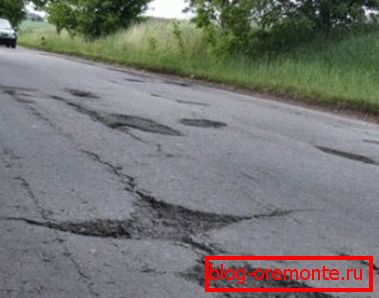
Correctly compacted constructive in the aftermath (after a set concrete design strength) it is possible to overcome only the special equipment:
- For example, it may be necessary to cut reinforced concrete with diamond circles.
- Diamond drilling of holes in concrete is also applied to the most dense elements.
Conclusion
As you understand, the process of increasing the density of concrete is necessary to strengthen the structure and extend its operational life. And this is a very important point, as we are talking about several years, about increased protection against mechanical damage and savings on repair work that may be needed in the future.
In the presented video in this article you will find additional information on this topic.